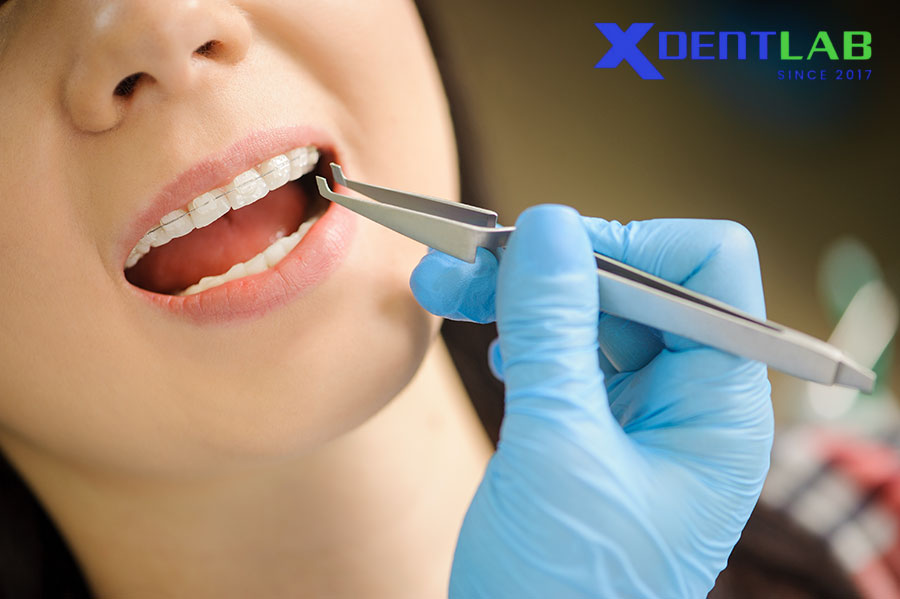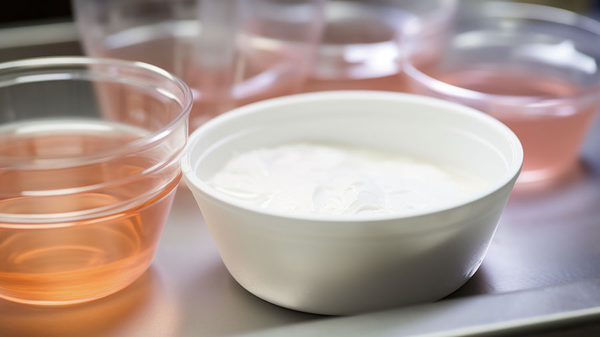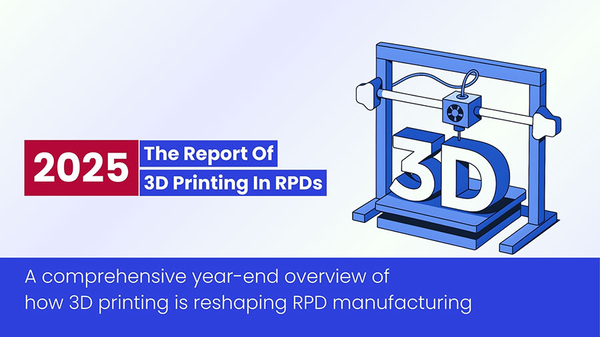Polycrystalline alumina brackets offer durable and aesthetic solutions for orthodontics. Dive into their structure, benefits, and recent advancements in technology.

Table of contents [Show]
Introduction to Polycrystalline Alumina Brackets
Polycrystalline alumina brackets are one of the two primary types of ceramic brackets used in orthodontics, alongside monocrystalline alumina brackets. Manufactured from aluminum oxide (Al₂O₃), these brackets consist of multiple crystal grains fused together during production. Unlike monocrystalline brackets, which are crafted from a single aluminum oxide crystal, polycrystalline brackets exhibit unique structural, mechanical, and optical properties that make them a popular choice in aesthetic orthodontics.
This article provides a detailed academic review of the manufacturing processes, material properties, clinical performance, and innovations related to polycrystalline alumina brackets, offering insights into their role in modern orthodontic treatment.
Manufacturing Process and Material Structure
Manufacturing Techniques
The production of polycrystalline alumina brackets primarily involves two methods:
Sintering Process
Aluminum oxide powder is compressed under high pressure and heated to approximately 1800°C.
This process fuses the particles into a dense, solid mass with multiple grain boundaries.
Sintering ensures high structural integrity and durability.
Injection Molding
A newer technique that eliminates the need for high-temperature sintering.
Offers better control over bracket dimensions and is more cost-effective for mass production.
However, it may result in slightly different material properties compared to traditional sintering.
Crystal Structure and Grain Characteristics
Polycrystalline alumina brackets are composed of numerous small crystals (grains) that are randomly oriented and bonded at grain boundaries.
Key Features:
Grain size ranges from 0.5 to 30 micrometers.
Smaller grain sizes improve mechanical properties, such as fracture resistance.
The presence of grain boundaries is a defining feature that influences both the mechanical strength and optical properties of the brackets.
Mechanical Properties
Fracture Toughness
Fracture toughness is a critical property for ceramic brackets, as it determines their resistance to cracking and breaking under stress.
Traditional sintered polycrystalline brackets exhibit moderate fracture toughness, suitable for most clinical applications.
Newer manufacturing techniques, such as 3D printing, have shown limitations, with lower fracture toughness compared to conventional methods.
Grain boundary characteristics play a significant role in fracture propagation, with smaller and well-distributed grains enhancing toughness.
Hardness and Wear Resistance
Polycrystalline alumina brackets have a high hardness value, typically between 1700-2000 HV (Vickers hardness).
Benefits of High Hardness:
Excellent wear resistance during orthodontic treatment.
Minimal deformation or slot dimension changes over time.
Resistance to damage from orthodontic forces.
Mechanical Aging Effects
Studies on intraoral aging effects have shown:
Minimal changes in hardness after clinical use.
Slight degradation in fracture toughness due to cyclic loading.
Limited impact from environmental factors like saliva and pH changes.
Optical Properties and Aesthetics

Translucency Characteristics
Polycrystalline alumina brackets are semi-translucent to opaque, unlike the highly translucent monocrystalline brackets.
Factors Affecting Translucency:
Light scattering at grain boundaries.
Random orientation of crystal grains.
Micropores between grains further scatter light, reducing clarity.
Color Stability
Polycrystalline brackets demonstrate excellent color stability:
Resistant to staining from dietary substances.
The opaque nature helps mask discoloration.
Surface treatments can further enhance stain resistance.
Clinical Appearance
While less visually clear than monocrystalline brackets, polycrystalline brackets still provide significant aesthetic advantages over metal brackets. Their appearance depends on:
Tooth shade and lighting conditions.
Patient expectations for aesthetic orthodontic solutions.
Clinical Performance
Bond Strength Considerations
The bonding performance of polycrystalline brackets is influenced by their surface structure:
Rough surfaces from grain boundaries enhance mechanical retention.
Chemical bonding with silane coupling agents is effective.
Adequate bond strength ensures reliable clinical performance.
Friction Characteristics
Friction between the bracket and orthodontic wire affects treatment efficiency:
Polycrystalline brackets exhibit higher friction than metal brackets due to surface roughness.
Manufacturing methods influence slot surface characteristics and friction levels.
Proper technique and wire selection can mitigate frictional challenges.
Bracket Fracture in Clinical Use
Bracket fractures are a potential concern:
Polycrystalline brackets are more prone to bulk fractures than tie-wing fractures.
Fractures often occur during debonding if excessive force is applied.
Careful handling and proper tools are essential to minimize breakage.
Comparative Analysis
Polycrystalline vs. Monocrystalline Alumina Brackets
Advantages of Polycrystalline Brackets:
Lower cost and easier manufacturing.
Better mechanical retention for bonding due to surface roughness.
Opaque appearance helps hide discoloration.
Disadvantages of Polycrystalline Brackets:
Lower optical clarity and translucency.
Slightly lower fracture toughness.
Higher friction during sliding mechanics.
Comparison with Zirconia Brackets
Fracture Toughness: Zirconia brackets are tougher and more resistant to breakage.
Color Stability: Polycrystalline brackets exhibit better resistance to staining.
Cost: Polycrystalline brackets are generally more affordable than zirconia alternatives.
Recent Advances and Innovations
3D Printing Technology
Enables patient-specific bracket designs.
Offers potential for improved slot precision and treatment efficiency.
Current limitations include lower fracture toughness compared to traditional methods.
Surface Modifications
Plasma treatments to enhance bonding strength.
Coatings to reduce friction and improve sliding mechanics.
Textured surfaces for better optical properties and aesthetics.
Hybrid Designs
Metal-reinforced slots within ceramic brackets.
Composite ceramic materials for improved durability.
Selective crystallization for optimized mechanical and optical properties.
Clinical Recommendations

Patient Selection
Polycrystalline alumina brackets are ideal for:
Patients with moderate aesthetic demands.
Cases requiring minimal sliding mechanics.
Patients with good oral hygiene practices.
Non-bruxism patients to reduce fracture risk.
Bonding and Debonding Protocols
Bonding Tips:
Proper surface preparation of both tooth and bracket.
Use of high-quality adhesives and primers.
Accurate bracket positioning to avoid stress concentrations.
Debonding Tips:
Use specialized tools to prevent bracket fractures.
Apply forces in the correct direction.
Consider thermal or ultrasonic aids for easier removal.
Conclusion
Polycrystalline alumina brackets offer a cost-effective and aesthetic solution for orthodontic treatment, balancing mechanical performance and patient satisfaction. While they lack the translucency of monocrystalline brackets, their durability, color stability, and affordability make them a practical choice for many patients.
Recent innovations, such as 3D printing and surface modifications, continue to improve the performance and customization of polycrystalline brackets. By understanding their properties and limitations, orthodontists can effectively integrate these brackets into their clinical practice, ensuring optimal outcomes for patients seeking discreet orthodontic solutions.
For dental practices seeking high-quality orthodontic materials, XDENT LAB provides FDA-approved polycrystalline alumina brackets manufactured to meet global standards. With our commitment to quality and innovation, we help orthodontists deliver exceptional care to their patients.
XDENT LAB is an expert in Lab-to-Lab Full Service from Vietnam, with the signature services of Removable & Implant, meeting U.S. market standards – approved by FDA & ISO. Founded in 2017, XDENT LAB has grown from local root to global reach, scaling with 2 factories and over 100 employees.. Our state-of-the-art technology, certified technicians, and commitment to compliance make us the trusted choice for dental practices looking to ensure quality and consistency in their products.

Our commitments are:
100% FDA-Approved Materials.
Large-Scale Manufacturing, high volume, remake rate < 1%.
2~3 days in lab (*digital file).
Your cost savings 30%.
Uninterrupted Manufacturing 365 days a year.
Contact us today to establish a strategy to reduce operating costs.
--------❃--------
Vietnam Dental Laboratory - XDENT LAB
🏢 Factory 1: 95/6 Tran Van Kieu Street, Binh Phu Ward, Ho Chi Minh City, Vietnam
🏢 Factory 2: Kizuna 3 Industrial Park, Can Giuoc Commune, Tay Ninh Province, Vietnam
☎ Hotline: 0919 796 718 📰 Get detailed pricing
Share this post:





